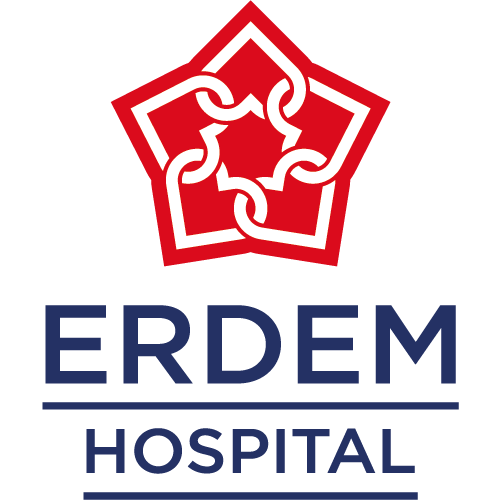The Department of Pulmonary Diseases at Erdem Hospital offers state-of-the-art diagnostic and treatment services for a wide range of respiratory conditions. With an expert team of pulmonologists, we ensure that each patient receives a comprehensive evaluation and personalized treatment plan. Our clinic specializes in the diagnosis and management of asthma, chronic obstructive pulmonary disease (COPD), lung cancer, pneumonia, and various allergic and inflammatory lung conditions.
Common Pulmonary Diseases Treated at Erdem Hospital
1. Chronic Obstructive Pulmonary Disease (COPD)
COPD is a progressive lung disease that includes chronic bronchitis and emphysema, leading to breathing difficulties. The main symptoms include persistent cough, sputum production, and shortness of breath.
Diagnosis & Treatment
- Pulmonary function tests (PFTs) to assess lung capacity.
- Bronchodilator reversibility tests.
- Oxygen therapy for severe cases.
- Medications including bronchodilators, corticosteroids, and mucolytics.
- Pulmonary rehabilitation programs.
2. Asthma and Allergic Lung Diseases
Asthma is a chronic inflammatory disease of the airways that leads to wheezing, breathlessness, and chest tightness. Allergic asthma is often triggered by environmental allergens such as pollen, dust mites, and pet dander.
Diagnostic Methods & Treatment
- Skin prick tests for allergens (inhalant and food allergies).
- Specific IgE blood tests.
- Pulmonary function tests to determine lung function.
- Long-term management with inhaled corticosteroids and bronchodilators.
- Allergen avoidance strategies and immunotherapy for severe cases.
3. Pneumonia
Pneumonia is an infection that inflames the air sacs in one or both lungs, causing symptoms such as cough with phlegm, fever, and difficulty breathing.
Diagnosis & Treatment
- Chest X-rays and computerized pulmonary tomography (CT scans) to assess lung inflammation.
- Sputum and blood tests to identify the causative organism.
- Antibiotic, antiviral, or antifungal medications depending on the infection type.
- Oxygen therapy and hospitalization for severe cases.
4. Pulmonary Embolism
Pulmonary embolism (PE) occurs when a blood clot travels to the lungs, leading to life-threatening complications.
Diagnosis & Treatment
- CT pulmonary angiography for definitive diagnosis.
- Blood tests including D-dimer to assess clot formation.
- Anticoagulant and thrombolytic therapy.
- In severe cases, surgical or catheter-assisted clot removal.
5. Pneumothorax
A pneumothorax occurs when air leaks into the space between the lung and chest wall, causing lung collapse.
Diagnosis & Treatment
- Chest X-ray and CT scan to assess lung collapse.
- Needle aspiration or chest tube insertion to remove excess air.
- Surgical intervention in recurrent cases.
6. Bronchitis
Bronchitis involves inflammation of the bronchial tubes, leading to cough, mucus production, and difficulty breathing.
Diagnosis & Treatment
- Pulmonary function tests.
- Sputum examination to check for bacterial infection.
- Treatment includes bronchodilators, corticosteroids, and antibiotics in cases of bacterial bronchitis.
7. Pleurisy
Pleurisy is an inflammation of the pleura (the lining around the lungs), often causing sharp chest pain during breathing.
Diagnosis & Treatment
- Chest imaging (X-ray, CT scan) to assess pleural effusion.
- Pleural fluid analysis for infection or malignancy.
- Pain relief with NSAIDs and targeted treatment of the underlying cause.
8. Inflammatory Lung Diseases
These include interstitial lung diseases (ILDs) and autoimmune-related lung inflammation.
Diagnosis & Treatment
- High-resolution CT scan for lung tissue analysis.
- Pulmonary function tests to assess lung impairment.
- Treatment involves immunosuppressive drugs and corticosteroids.
Diagnostic Methods Available at Erdem Hospital
- Skin Prick Tests: Used for identifying allergic responses to inhalants and food allergens.
- Total IgE Assay: Measures immunoglobulin E levels to detect allergic reactions.
- Total Eosinophil Count: Helps diagnose eosinophilic lung diseases.
- Respiratory Function Tests (PFTs): Includes spirometry and reversibility tests.
- Computerized Pulmonary Tomography (CT Scan): Provides detailed imaging of lung structures.
- Specific IgE Examinations: Identifies allergens causing respiratory distress.
- Sputum Analysis: Detects infections, including bacterial and fungal pathogens.
Frequently Asked Questions (FAQs)
What are the early signs of lung disease?
Early symptoms include persistent cough, shortness of breath, wheezing, fatigue, and chest discomfort. If these symptoms persist, seeking medical evaluation is essential.
Can allergies cause lung diseases?
Yes, allergies can contribute to conditions such as allergic asthma and allergic rhinitis, which can significantly affect lung function.
How are pulmonary diseases diagnosed?
Diagnosis is based on medical history, physical examination, imaging tests (X-ray, CT scan), lung function tests, and laboratory investigations (blood tests, sputum culture).
What are the risk factors for COPD?
The primary risk factor is smoking. Other causes include long-term exposure to air pollution, chemical fumes, and genetic factors.
How is pneumonia treated?
Treatment depends on the cause (bacterial, viral, or fungal). It includes antibiotics, antiviral or antifungal medications, oxygen therapy, and supportive care.
How can I prevent pulmonary diseases?
- Avoid smoking and exposure to air pollutants.
- Get vaccinated for influenza and pneumococcal infections.
- Maintain good hygiene to reduce infection risk.
- Manage underlying conditions such as asthma and allergies.
What is the difference between asthma and COPD?
Asthma is a reversible airway condition triggered by allergens, while COPD is a progressive and irreversible disease mainly caused by smoking and environmental exposure.
What are the treatment options for pulmonary embolism?
Treatment includes anticoagulant medications, thrombolytic therapy, and in severe cases, surgical clot removal.
Can lung diseases be cured?
Some lung diseases, like pneumonia, can be treated completely. Others, such as COPD and asthma, require long-term management to control symptoms.
When should I see a pulmonologist?
Consult a pulmonologist if you experience persistent cough, breathing difficulties, chest pain, frequent respiratory infections, or a family history of lung disease.
